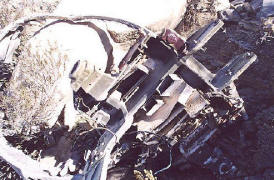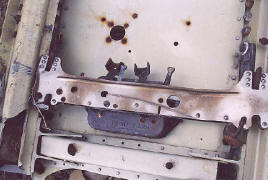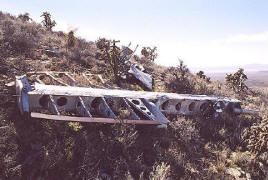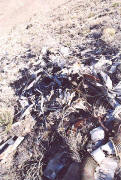|
|
 |
| A Boeing B-29 Superfortress on the ramp at Davis-Monthan Field in Tucson, circa 1945. |
Boeing B-29A, # 44-69943, crashed on June 30, 1945, 100 miles east of El Paso, Texas.
Summary: The B-29 departed Davis-Monthan Field for a 3,000 mile night cross country navigation flight on the evening of June 30, 1945. The non-stop route was to take the bomber from Tucson to Mobile, Alabama and back. The crew was to fly at 11,000 feet elevation until Pecos, Texas, where they would descend 100 feet per minute until they were 1,000 above the terrain, and continue this altitude until Mobile, Alabama. This would keep them above the 8,700 foot high mountains 100 miles east of El Paso. At 10:40pm, an American Airlines pilot reported he saw a huge fireball below him and believed it was a large aircraft that had impacted the side of a mountain. The Investigation revealed the B-29 hit the side of a mountain while at normal cruising speed. The wheels were retracted, flaps were up, cowl flaps were closed, and there was no indication of any malfunction. The 12-man crew perished. The crew was: 1st Lt's James Couch and Joseph Mennen, Flight Officers James Thomas, Ernest Wilson and Eugene Ghale, 2nd Lt's James Green and Wesley Waldron, M/Sgt Orval Lawless, Cpl. Ariste Landers and Pvt's Fayette Stanfield, Ralph Martin and Clark Moore. |
 |
 |
 |
 |
| A gun mount that .50 caliber guns would normally be affixed to. | A bomb shackle still mounted to the frame. | A massive exhaust manifold. | The frame to one of the wing sections. |
|
|
 |
| A compact ashtray found in the impact debris. There would have been a small handle mounted where the hole is. | Wires and debris at the impact point. |